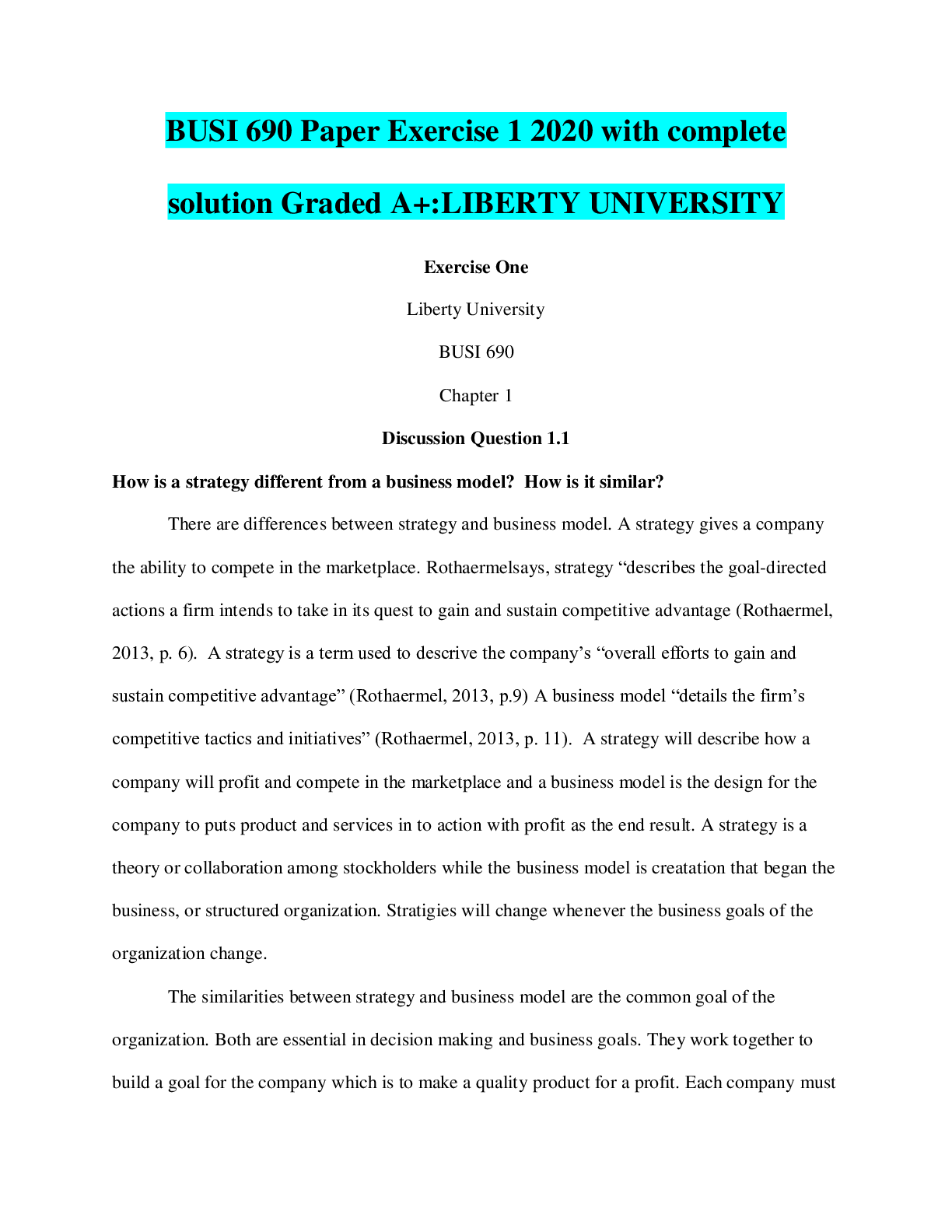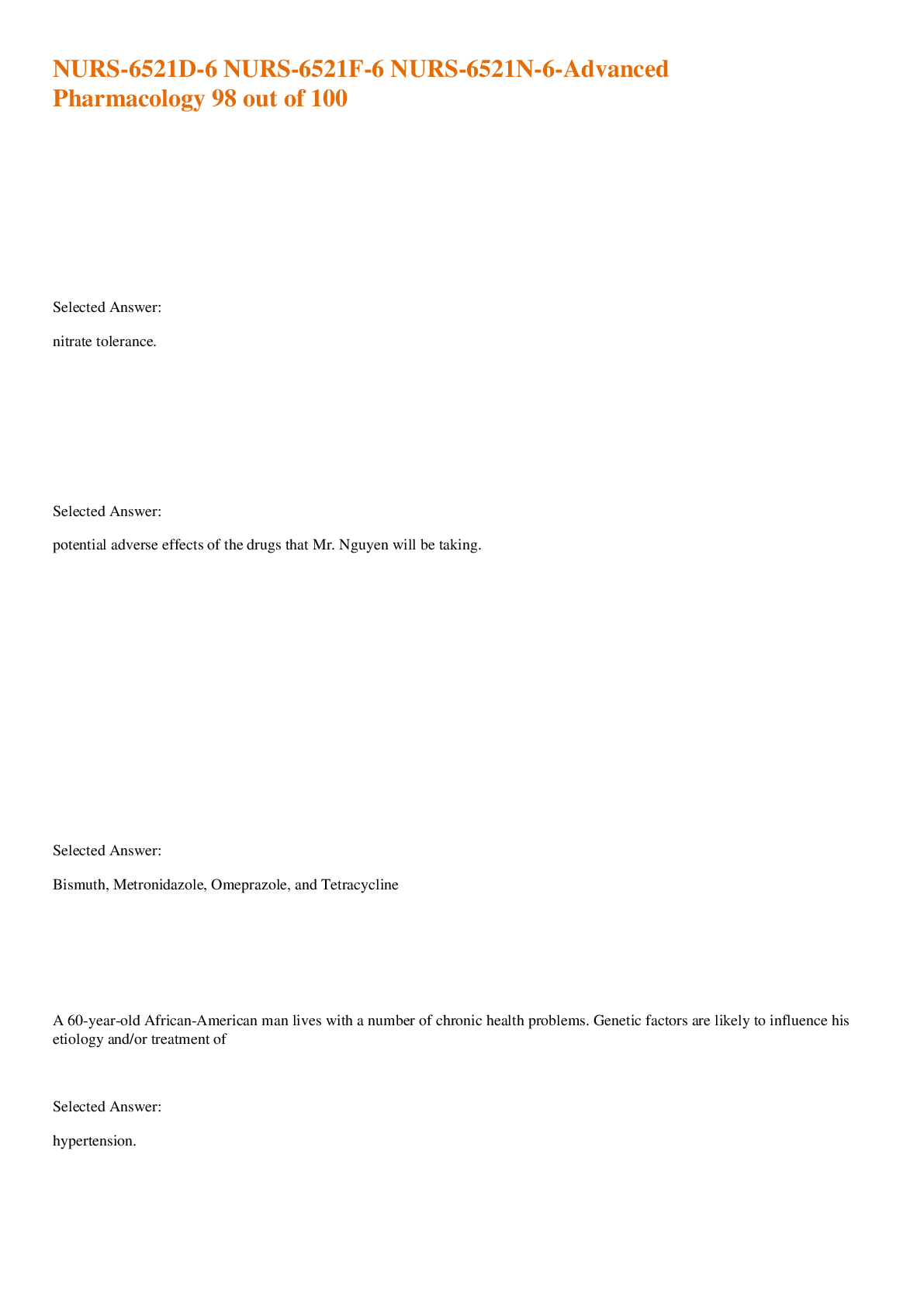OB Exam 3 Postpartum and Newborn study guide complete solution graded A
Document Content and Description Below
OB Exam 3 Postpartum and Newborn Study Guide Postpartum (Chapters 15, 16 and 22) 2-3 Physiological adaptation/ transition: Uterus- placental site heals, Involution (uterus goes back to normal), lo... chia Menstruation- lactating woman (2-18 mos if breastfeeding) vs. non-lactating woman (7-9 weeks if not breastfeeding) Ovulation- lactating woman vs. non-lactating woman Abdomen- bowel function (3-5 days bowels should move), bladder function (should pee after cath is out at least 6 hours after delivery, have pt up to bathroom before then to facilitate urinating, will have a lot of fluid so a lot of output is normal, 300-400 mL bladder is telling you that you have to go), weight loss (loss of baby out of the womb, blood loss, placenta, fluids; 500 mL vaginal, 1000 mL c/s) Cardiovascular changes- lab values: WBC, CBC, clotting factors (RBCs will be decreased due to blood loss) Psychological adjustments- bonding: emotional attraction of parents to newborn (initial); attachment: progressive psychological bond between infant and caregiver that develops and strengthens over time (long term) Reva Rubin’s 3 phases: -Taking in: first 24-48 hours; preoccupied with own needs, passive and dependent, touches and explores infant, needs to discuss labor and delivery (relives birth experience) -Taking hold: begins by 2nd to 3rd day postpartum (may last longer), dependent/independent behavior [Show More]
Last updated: 2 years ago
Preview 1 out of 11 pages

Buy this document to get the full access instantly
Instant Download Access after purchase
Buy NowInstant download
We Accept:

Reviews( 0 )
$8.00
Can't find what you want? Try our AI powered Search
Document information
Connected school, study & course
About the document
Uploaded On
Jul 18, 2021
Number of pages
11
Written in
Additional information
This document has been written for:
Uploaded
Jul 18, 2021
Downloads
0
Views
79



 (2).png)


.png)



 (1).png)



.png)
.png)







